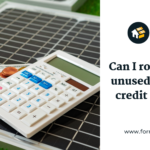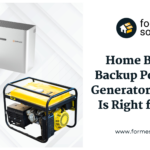
Table of Contents
Best Locations for Your Home Battery System
Solar batteries, or energy storage devices, are becoming more and more popular among homeowners as a way to build energy security and lessen their reliance on the grid due to the rising cost of grid power and the expanding popularity of solar energy. Households may reduce their power costs and benefit from a dependable and sustainable energy source by combining solar batteries with solar panels.
To guarantee that solar battery installations are done properly and successfully, there are laws, guidelines, and recommendations in place in the United States. It's crucial to carefully evaluate where you should and should not place your solar battery if you want to get the most out of it and maintain your safety. In order to optimize your solar battery's capacity and your peace of mind, there are a few important elements to consider when deciding where it should be placed.
Where Can You Install a Solar Battery?
Safety should always come first when installing solar batteries. In order to be sure that your installation complies with the NFPA's stringent safety requirements, it is essential to consult them. The NFPA is a reputable non-profit group that develops codes and standards that promote fire safety, and they have produced a particular standard for energy storage systems called NFPA 855: Standard for the Installation of Stationary Energy Storage Systems.
You may be certain that your solar battery installation will be as secure as possible by following the guidelines provided in NFPA 855. This standard outlines the necessary parameters that must be adhered to in order to ensure a safe and efficient installation. Its goal is to reduce any possible risks connected to energy storage.
NFPA 855 specifies several installation locations for various capacities of energy storage systems. Systems between 1 kWh and 20 kWh are regarded as home systems; systems bigger than 20 kWh must adhere to commercial installation standards. According to NFPA 855, you can securely put your solar battery in the following places if your system is 20 kWh or less:
- A garage that is whether connected or detached
- Regardless of whether it's outside or on an outside wall, it must be three feet from any doors or windows.
- Whether it be a utility closet, a storage area, or another location
In any case, if you put your storage system indoors in an unfinished room, you must make sure that the walls and ceiling are lined with at least 5/8 inch gypsum board (also known as drywall) for fire resistance. You should also make sure there is a barrier to protect your battery from inadvertent damage, which might result in a fire or explosion, if you're placing it in a place where a car could contact it.
What To Consider When Choosing a Battery Location?
It's essential to carefully select the location for your solar battery when purchasing and installing one since it can cost between $8,500 to over $10,000, exclusive of installation expenses. In deciding where to install your system, there are several factors to consider, such as weather conditions, local regulations, and the ideal location for maximum energy efficiency. Although we've highlighted some of these factors, it's still best to seek advice from your installer and adhere to the manufacturer's recommended installation guidelines to ensure your solar battery is placed in the best possible spot. By doing so, you can enjoy a reliable and sustainable source of energy and maximize your savings on electricity costs.
Weather and climate
The installation of solar batteries can be either indoor or outdoor, depending on their IP rating. This rating determines the level of protection the battery casing or electrical enclosure provides against water and dust, as per international guidelines. However, in areas with extreme climate fluctuations, like heavy rain, high temperatures, and humidity, it's advisable to install the battery inside to ensure maximum longevity and reduce the risk of damage.
By placing the battery in an indoor location, you can minimize exposure to harsh weather conditions and ensure that it operates at its optimal level. Consult with your installer or the manufacturer's installation tips for guidance on the best location for your solar battery, ensuring its safety and efficiency for years to come.
Weight of the battery
It's important to note that certain solar batteries can be quite weighty and compact, which may necessitate consulting a licensed structural engineer before selecting the appropriate location for your energy storage system.
An engineer can inspect your property and recommend suitable areas and fixtures that can handle the battery's weight while complying with building codes. This is critical because improper installation can lead to significant structural damage or even personal injury.
By consulting with a qualified engineer, you can ensure that your solar battery is installed securely and that your home's structural integrity is maintained. It's always better to err on the side of caution when it comes to heavy equipment like solar batteries, so don't hesitate to seek expert advice before proceeding with your installation.
Ventilation and safety
It's vital to remember that some solar batteries may produce hot temperatures and combustible fumes while operating, which might provide a safety risk if not handled appropriately. The best place for your energy storage system should be well-ventilated, away from any combustible materials, and away from any high-traffic areas of your home. By doing this, you may reduce the possibility of inadvertent ignition or gas buildup that could be detrimental to you and your family. You can make sure that your solar battery system functions effectively and incident-free by placing a priority on safety and doing meticulous planning during the installation process.
Make of the house
If you have a brick house, you have more options for installing your solar battery due to its non-flammable nature. However, if your home has wood siding, it's important to take additional precautions to ensure safety. In such cases, it's recommended to install a non-combustible barrier between the battery and the siding to reduce the risk of fire. By doing so, you can maintain the integrity of your home's structure and keep your family safe while enjoying the benefits of a solar energy system.
Serviceability
Your solar battery will typically run smoothly with little maintenance required. However, unforeseen issues can arise, and you may need to repair or replace the battery. It's wise to choose an accessible location for installation to ensure that servicing and maintenance can be conducted easily, without much disruption.
System size
It's essential to check that there is enough room between each battery when installing a storage system made up of several batteries in order to preserve safety. When selecting a suitable place for the installation, it should be kept in mind that the recommended safe distance is at least three feet between each battery.
Manufacturer requirements
It's crucial to remember that various battery manufacturers could have particular guidelines on how and where to install their batteries. The warranty can be voided if you don't follow these guidelines. In light of this, it is advised that you speak with your installer to make sure that the site you select for your storage system conforms with the manufacturer's guidelines, especially if you're thinking about a certain battery model.
IP Rating (Ingress Protection)
An IP Rating, sometimes referred to as an Ingress Protection Rating, is a classification system that offers details on the degree of defense that a device or enclosure has against the incursion of foreign materials, such dust, dirt, and water. The rating is made up of two numbers: one that represents the degree of protection against solids, and another that represents the degree of protection against liquids. Better protection is provided by a higher number. For example, a gadget with an IP68 classification is totally dust-tight and can tolerate submersion in water for a long time.
| FIRST DIGIT | INTRUSION PROTECTION | SECOND DIGIT | MOISTURE PROTECTION |
| 0 | No protection. | 0 | No protection. |
| 1 | Protected against solid objects over 50mm, e.g., accidental touch by hands. | 1 | Protected against vertically falling drops of water, e.g., condensation. |
| 2 | Protected against solid objects over 12mm, e.g., fingers. | 2 | Protected against direct sprays of water up to 15 degrees from the vertical. |
| 3 | Protected against solid objects over 2.5mm, e.g., tools & wires. | 3 | Protected against direct sprays of water up to 60 degrees from the vertical. |
| 4 | Protected against solid objects over 1mm, e.g., wires & nails. | 4 | Protected against water splashed from all directions, limited ingress permitted. |
| 5 | Protected against dust limited ingress, no harmful deposits. | 5 | Protected against low pressure jets of water from all directions, limited ingress permitted. |
| 6 | Totally protected against dust. | 6 | Protected against strong jets of water, e.g., on ships deck, limited ingress permitted. |
Conclusion
Solar batteries have emerged as a sustainable and reliable source of energy, providing homeowners with an opportunity to reduce their dependence on the grid and lower their electricity bills. While choosing the right location for your solar battery, it is essential to take into account various factors such as weather and climate, weight, ventilation, and safety considerations, as well as the structure of your house. Adhering to the guidelines provided by the NFPA and seeking the advice of qualified professionals can help ensure that your solar battery is installed securely and operates efficiently for many years to come.
As solar energy continues to gain popularity and the cost of grid power rises, investing in a solar battery can be a smart choice for homeowners looking to improve their energy security and save money. By harnessing the power of renewable energy and relying less on traditional energy sources, we can help preserve our planet for future generations. Take the first step towards sustainable living today by exploring the benefits of solar energy and solar batteries.















